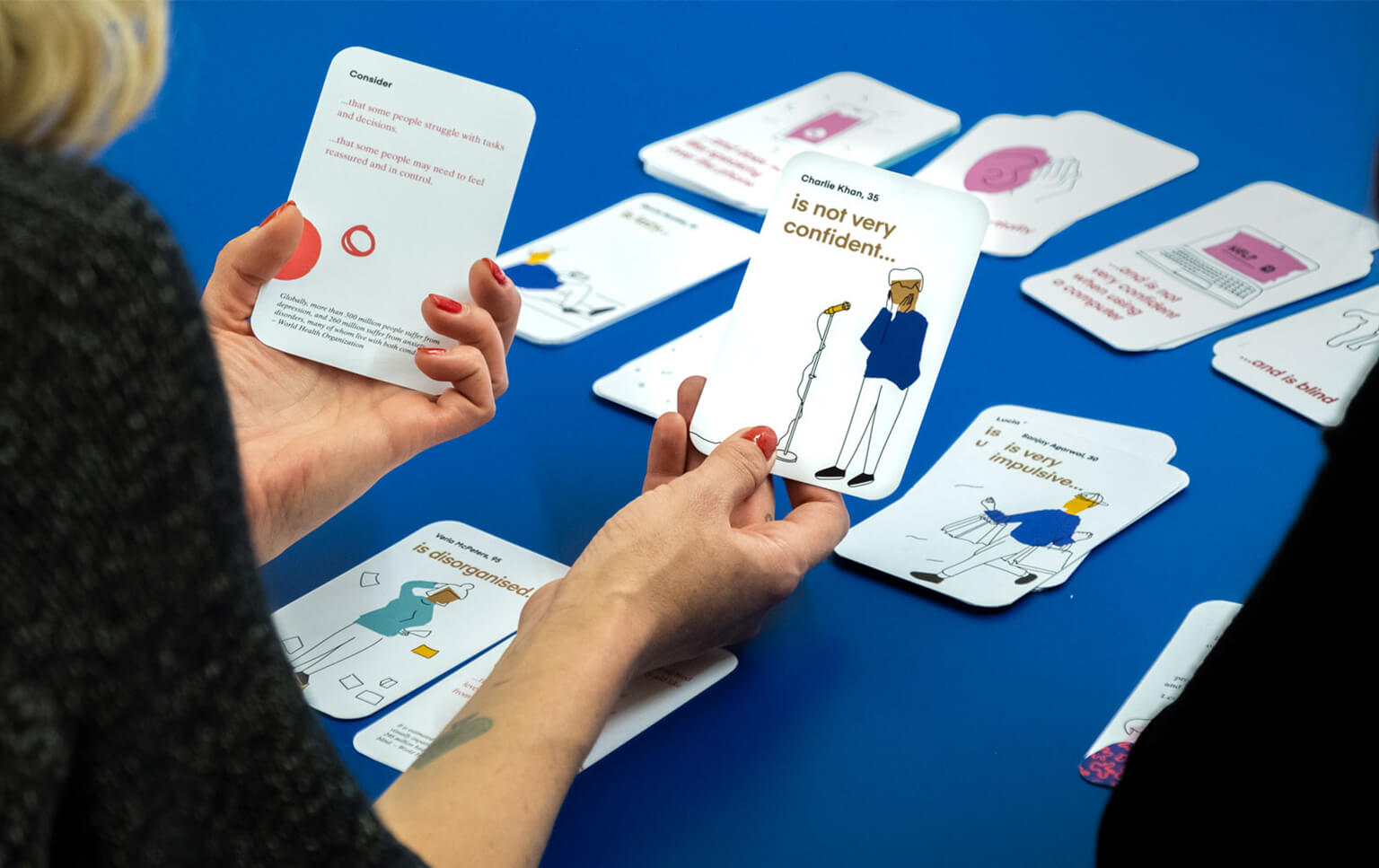
Make space for inclusive design with Cards for Humanity
We risk moving too fast, forgetting to consider the diverse needs of everyone who uses what we create. Not only does that exclude people from those services, it excludes them from society at large.
Excluding people from a service poses an obvious ethical issue. It also poses a business issue – and potentially a legal one.
The responsibility is bigger than the individual
As individuals, it’s easy to understand the case for inclusive design. But as a business, it can be harder to make it a priority. Luckily, there’s a growing legal precedent and responsibility to make products and services accessible to all.
One business that has recently come under fire for failing to cater for all their customers is Domino’s Pizza. They were successfully sued by Guillermo Robles, a blind man who was unable to use his screen reader to access the app and make an order.
Inclusive design is good for business too
We often hear the argument that a business doesn’t have the budget to invest in inclusive design. In fact, the numbers prove it’s an investment they need to consider.
The ‘purple pound’ is a term used to describe the spending power of disabled people and their families. It’s valued at around a massive £212 billion in the UK.
£2 bnis lost every month by businesses ignoring the needs of disabled people. |
73%of potentially disabled customers face barriers on 1 in 4 of websites they visit. |
3 in 4disabled people and their families have left a shop or business because of poor customer service. |
2 in 3disabled people think that products and services are not developed with them in mind. |
Stats from Extra Cost Commission
Designing for a diverse range of needs doesn’t stop at people with a disability. There are many other reasons why someone might have difficulty using a product or service. For example, a form that forces you to conform to rigid, outdated defaults about race, sexuality or gender. Or a set of instructions filled with lengthy, jargon-filled text, difficult to decipher for someone with English as a second language.
Inclusive design isn’t just about designing for people with different needs: it’s also about different perspectives.
Inclusive Design is a methodology, born out of digital environments, that enables and draws on the full range of human diversity. This means including and learning from people with a range of perspectives.
Microsoft — Inclusive Design
Businesses that listen to their customers’ needs and design truly inclusive products and services, will stand out from the competition for all the right reasons.
Welcome everyone into your process
At frog, we believe in inclusivity and inclusive design as a process. If someone can’t use a product or access a service because they are temporarily, situationally or permanently disabled, or because the way they identify doesn’t conform to outdated social ‘norms’, it’s the fault of bad business and lazy design.
Robles’ attorney, Joe Manning, said in a statement that “the blind and visually impaired must have access to websites and apps to fully and equally participate in modern society – something nobody disputes,” he said. “This outcome furthers that critical objective for them, and is a credit to our society.”
Changing laws and regulations mean that businesses need to invest more time ensuring their design is up to scratch.

Cards For Humanity can be used throughout the design process
In a world of lean thinking and ‘move fast and break things’ mentalities, it’s a complicated agenda to push. But we’re trying to bring a new way of thinking into our projects at every opportunity and educate our clients as we go.
We created Cards for Humanity as a practical tool to advocate inclusive design. It began as a physical pack of cards, but with more people working remotely, we’ve now launched it online.
There are two types of cards – ones which describe a user, ones which describe a diverse range of needs. These cards combine to set up a variety of scenarios to help test your product, service or user journey from a different perspective.
Cards for Humanity can be used at many points during the design process, such as:
- Bringing new perspectives to initial propositions
- Testing service blueprints with various scenarios
- Running workshops to expand thoughts around target user groups
Do you think you and your team could welcome some more diverse thinking into your work? We run remote workshops using Cards for Humanity to help teams tackle business problems with an inclusive design lens. Talk to us about a Cards for Humanity workshop at your organisation.
Join the first inclusive design community
We’re starting to build a diverse and engaged community of inclusive design enthusiasts. Could that be you?
Join a team of people building awareness of inclusive design and driving the practice with regular meetups, knowledge-sharing and problem-solving with tools like Cards for Humanity. Sign up below to hear what’s coming next.

Jordan has 18 years of experience, leading teams and crafting valuable experiences that people love. He’s successfully delivered products into the hands of customers for Google, Facebook, Red Bull and many more household brands. He’s passionate about the entire product development lifecycle, as well as how businesses can organise to deliver brilliant customer experiences at scale.
We respect your privacy
We use Cookies to improve your experience on our website. They help us to improve site performance, present you relevant advertising and enable you to share content in social media. You may accept all Cookies, or choose to manage them individually. You can change your settings at any time by clicking Cookie Settings available in the footer of every page. For more information related to the Cookies, please visit our Cookie Policy.